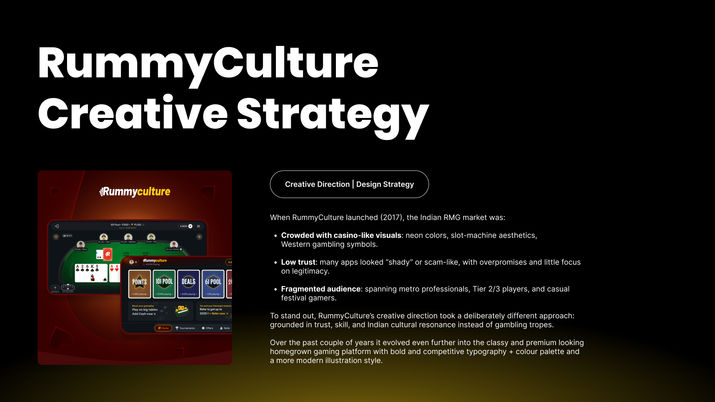Rummyculture - creative Direction for product

problem statement
When RummyCulture launched (2017), the Indian RMG market was:
Crowded with casino-like visuals: neon colors, slot-machine aesthetics, Western gambling symbols.
Low trust: many apps looked “shady” or scam-like, with overpromises and little focus on legitimacy.
Fragmented audience: spanning metro professionals, Tier 2/3 players, and casual festival gamers.
To stand out, I directed RummyCulture’s creative vision that took a deliberately different approach: grounded in trust, skill, and Indian cultural resonance instead of gambling tropes. Over the past couple of years it evolved even further into the classy and premium looking homegrown gaming platform with bold and competitive typography + colour palette and a more modern illustration style.
Evolution of the creative language:
As RMG advertising became heavily regulated (ASCI, government guidelines), the market got saturated with similar-looking platforms and celebrity-led ads.
Players became more discerning, seeking not just cash rewards, but also brand credibility and emotional connection.
solution
Creative Strategy:
More bold, vibrant palettes, moving closer to entertainment without losing professionalism.
Dynamic, sports-broadcast-inspired.
Introduced narrative-driven advertising (players overcoming challenges, skill mastery, “everyday hero” storytelling).
Campaign lines reinforced skill, confidence, and pride (e.g., celebrating players as “Champions of Culture”).
Gamified referral systems wrapped in fun, celebratory visual language.
Differentiation: Instead of competing head-to-head with celebrity-heavy competitors, RummyCulture doubled down on authenticity + player stories + cultural pride.














